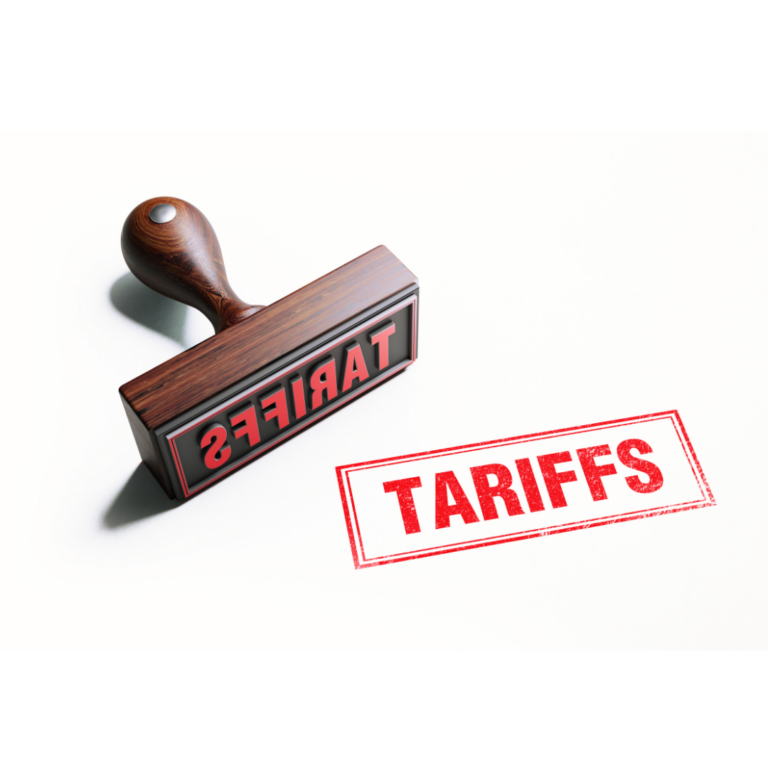Market Update

It’s February already, thankfully. The sun seems to be on extended holiday in the Northeast. Perhaps Punxsutawney Phil will be more accurate than economists and strategists alike as this morning he indicated an early Spring is in store. As for us market watchers experiencing something akin to Groundhog’s Day would be nirvana and the first month of the New Year was a continuation of the final two months of 2023. So far, so good for February too. With the S&P logging a return of 1.68% for the month, that annualizes out to a 20% return, ahh, if it were only that easy. There has been a lot to unpack, so we’ll meander across a number of topics to share our thoughts and what we are looking at right now and in the months ahead.
Central Banks: As we have joked about recently, Federal Reserve meetings have become must-see TV. For the last 6 months, since the last hike in July, the meetings have been less about the rate announcement itself and more about trying to get inside Chairman Powell’s thought process. With markets hanging on every word and probing the quarterly Statement of Economic Projections (SEP) for any insights, it’s no surprise that two of the Fed meetings in 2023 corresponded to the most volatile trading days of 2023. The presser earlier this week augured the worst day since September when Powell seemed to take the March cut off the table. Data since then only strengthened the case for May as the lift off date for their easing cycle. That seems to be reasonable enough, in acknowledging that they have come a long way in taming inflation (rolling 6 month PCE is around 2%) they can start to shift focus to the other part of their dual mandate, which is full employment. Bringing both inflation and jobs into a more balanced weighting is a good thing and a far cry from the pain Powell mentioned in August 2022 at Jackson Hole.
While Chair Powell and the Fed are the most important game in town, central banks in the UK, Europe and Japan are worth monitoring. The UK and Europe are dealing with more of the stagflation dynamic we witnessed in the late 70s, though there have been some recent signs of easing inflation. The ongoing impact of higher energy prices has more impact there where they rely heavily on imports and the fact their mortgage rates tend to be much more variable in nature have meant higher monthly payments not just for new buyers but even those who have purchased homes 5 or more years ago. In the States, it’s far more common for borrowers to term out their debt for 30 years. Many folks with a mortgage today have locked in rates of 4% or below. Monetary policy likely will have some impact over the next several years and I would expect the trough of their easing cycle to be below that of what we see in the US. The ECB seems likely to wait for the United States to move first, but they won’t be far behind. Japan has witnessed sustained inflation for the first time in more than 30 years but at a much more palatable level. They have thus far maintained yield curve control policies which suggests that they are in no rush to start raising rates. If they do it’s likely to be modest at best as with households having sizable exposure to the JGBs any drop in price brought on by higher rates may impact consumer behavior. Higher rates would also have some real impact on the carry trade, but that discussion is for another day.
Labor: As the frequency of layoff announcements hitting the headlines have increased over the last 12 months the Fed needs to be very careful about how much softening occurs before it becomes difficult to reverse that trend. Fortunately after a blockbuster January Nonfarm Payroll Report, the unemployment rate ticked back down to 3.7% after rising the prior month albeit slightly to 3.8%. It’s becoming ever more obvious that so goes the labor market so goes the economy. When the unemployment rate jumps by .50% in a short period of time, it’s likely to rise another 1.00% in a hurry as we have seen in prior cycles leading to a recession. Allowing the labor market to get untethered is the quickest path to a hard landing. We have seen new weekly unemployment filings increase to 224,000 in the most recent week and continuing claims remain around 1.8MM. Hardly worrisome levels unless you are one of those impacted, but the direction itself is worth watching. It was good to see job openings surprisingly increase in the most recent JOLTS report and especially in sectors like manufacturing. Another bright spot is that the “quit rate” has dropped sharply since the height of the pandemic where workers bounced to new opportunities at an unprecedented rate speaking to labor tightness. This probably has an added positive effect on productivity as fewer new workers have to adjust to unfamiliar surroundings. Continuing the soft landing narrative the Bureau of Labor Statistics just released their quarterly Employment Cost Index which showed further moderating, which is a good sign when it comes to inflation and margins. Nominal wage growth is around 4% back to levels we saw pre-pandemic.
Inflation: With CPI trending down, and PCE following a similar path perhaps the debate over transitory can be put to rest. The stickier shelter component will start to show signs of disinflation or outright deflation in the coming months as softer housing data and a glut of new multi-family housing comes online. While there has been much hand wringing over financial conditions easing (whether directly or indirectly), there is little evidence that higher asset prices are inflationary when it comes to consumption of goods or services. In the post Global Financial Crisis(GFC) world of Zero Interest Rate Policy (ZIRP) inflation consistently undershot the Fed’s target. I am not convinced this time is different. The situation in the Red Sea is worth monitoring, but that shipping lane has less impact on goods that come into the US versus other countries and the case for strong case for continued globalization means large export driven economies like China, Vietnam, Mexico and increasingly India are able to provide disinflationary if not deflationary pressures at a time when that may not be a bad thing. Consumer sentiment surveys have for the last couple of years suggested inflation expectations had become anchored somewhat higher, but some better responses over the last couple of months are encouraging.
Earnings & Margins: As we are in the midst of 4th quarter earnings it would be best to describe the current numbers as “meh.” Profits are likely to be up quarter over quarter for the second quarter in a row, but have thus far come in lower than estimates going back a few months. Some of that is a byproduct of companies being very cautious and not taking on excess inventory, worried about their end consumer and some margin pressures remain. According to FactSet’s Earnings Insight as of Friday January 26th of the 25% of companies that had reported roughly 70% of companies have beat on both earnings and revenue, below 3 and 5 year averages respectively. This week we have seen some better than expected earnings from names in the Technology, Consumer Discretionary and the Communication Services sectors which have an outsized weighting on the market so the overall numbers are likely to improve but all in all it’s hardly been a blowout quarter. Given present lofty valuations, meaningful moves higher from here will need to be supported by improving earnings growth. While the consensus estimate called for as much as 14% YOY growth for the S&P 500 as recently as last Fall, those numbers have come down now to about 10% for 2024. That figure may still be a bit ambitious with GDP forecasts for the year roughly around 2% and inflation moderating. We know companies have a number of levers to pull to improve earnings from buybacks to layoffs, the former an accounting maneuver while the latter likely having more negative intermediate impact on the economy as a whole, so be careful what we wish for here. The good news is that margin pressures are likely to abate given further improvement in the supply chain, improved productivity and slowing wage growth. We may not see peak margins like we saw in 2021 however they remain historically high which makes sense in a less capital-intensive economy.
Global Economy: As we alluded to the challenge of central banks all around the globe to find that happy balance on policy, it’s safe to assume some positive developments abroad would be a positive for the US economy which has run above trend for the last couple of quarters. While there was hope for an improving China in early 2023 and the possibility of a real slowdown in Europe could be avoided, that was not the case. As China continues to wrestle with a housing crisis that has been going on for nearly 10 years, structural reforms have been delayed as Xi Jinping focuses on the common prosperity initiatives which have hurt markets at home. At this point the base case should assume very little help from China in supporting global growth and that seems to be well priced in. If there is some improvement it would be welcome, though I wouldn’t bank on it. Europe, China’s largest trading partner, sees it’s trajectory far more closely tied to developments in the Middle Kingdom, they may not move in lockstep but it’s unlikely that you’d witness a reacceleration in growth in one and not the other. Fortunately, valuations abroad are far less demanding, though markets likely exceed expectations. The likelihood of lower interest rates and possibly a weaker dollar would be a positive for US investors investing abroad as well as remove some near term headwinds on emerging economies that still very much rely on dollar funding for their credit markets.
In summary, a repeat of the last couple of quarters would be great where it’s been upside surprises for both the economy and the markets here in the US. As inflation continues to head lower, that’s a positive even if growth may have peaked in the 3rd quarter of 2023. Growth above trend (2%+ in real terms) is supportive of the labor market and asset prices and if some of the encouraging data regarding manufacturing is not in fact a false start we could revert back to synchronized global growth like we saw in 2016-2017.
They say we’re young and we don’t know
We won’t find out until we grow
Well I don’t know if all that’s true’
Cause you got me, and baby, I got you
-Sonny & Cher
Sources: WSJ, Barron’s, Factset, Bloomberg, YCharts, FRED St. Louis Fed, Bureau of Labor Statistics

Breakwater Team
At Breakwater Capital, we work with families across the United States, providing each client with a personalized experience tailored to their current circumstances, future goals, and timelines.











